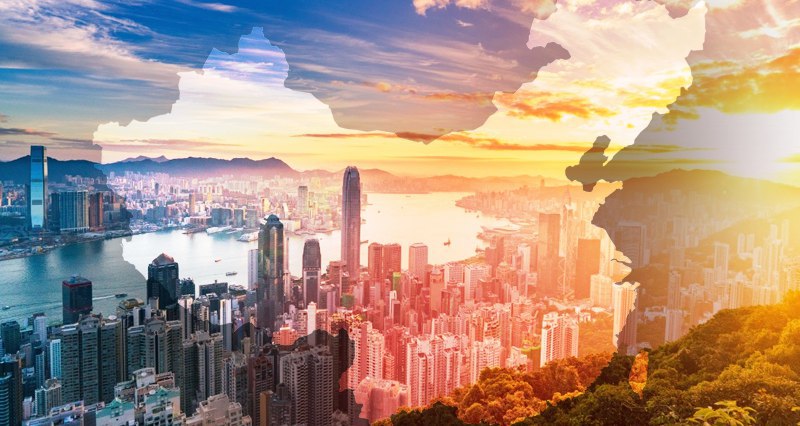I am writing from Shanghai where I arrived last Sunday. The heat in the streets of this city of 24.7 million inhabitants is overwhelming. Shanghai is located in the eastern region of China. It is a river city located 20 km from the sea in the Yangtze River Delta, the largest in China and one of the longest in the world.
It is also the most populous metropolis in the country despite the fact that last year it reduced its population for the first time in history. The life expectancy of its inhabitants is 83.2 years, similar for example to that of Norway and Sweden. It is, along with Beijing, Tianjin and Chongqing, one of the four municipalities centrally administered by the country’s national government.
From the point of view of its geography, the city is crossed by the Huangpu River, a tributary of the Yangtze that divides it into two sectors: the western one, where the historic center is located, and the eastern one, where the financial district of Pudong is located. It has around 4,000 skyscrapers, some of them the tallest in the world. Its network of cultural, sports and entertainment centers is impressive.
The economic issue covers the country’s news agenda. I don’t speak or understand Mandarin Chinese, but I get my information the old-fashioned way from the English-language newspapers that are still heavily printed on paper – just the way people of my generation like it.
Recently, last week, an important symposium was held with personalities who are not members of the Communist Party of China, in which President Xi Jinping participated. It was about consulting and discussing the economic situation of the country and the tasks to be faced in the second half of the year.
According to the Chinese president, progress must be sought while maintaining stability. For this, it is necessary to apply an original philosophy of development, building a new pattern that deepens the policy of reform and opening, expanding domestic demand, increasing confidence and preventing risks.
China’s economic performance in the first half of the year showed signs of recovery. GDP grew 5.5% year-on-year, showing a notable acceleration compared to last year. Agricultural supply, industry and consumption grew, especially high quality.
There are great expectations in the country and even in international financial organizations such as the World Bank and the International Monetary Fund that China’s economic growth will be positive for itself and for the world, contrary to what happens in most of the planet. Domestically, growth will make a great contribution to domestic demand for GDP, showing a growing upward trend.
The production of solar cells, electric vehicles and charging batteries has increased. This is remarkable to the naked eye of anyone and represents -for me- the most conspicuous change in the city since my last trip four years ago. It can be perceived by the increase in streets and avenues of charging batteries for electric vehicles and their green plates, unlike the traditional blue ones.
Although Shanghai is a city with a high level of development, the people with whom I have spoken (colleagues and friends) highlight the evident repercussions on consumption that are observed after the victory obtained by the country in the fight against extreme poverty in the year 2020, accentuating the possibility that this scourge will be definitively removed from the national reality in 2049, as the authorities have proposed.
Likewise, there is a clear recovery in tourism after the pandemic: the high influx of people in restaurants, airports and railway terminals attest to this. Some friends I have talked to tell me that it has become very difficult to get train and plane tickets.
Of course, we are in the middle of summer, the holiday season for children and young people who, together with their parents, take the opportunity to get out of the city. In the same way, youth crowds are seen in sports, cultural and recreational activities in the multiple spaces that the city has created for recreation. In perspective, the neighboring city of Hangzhou is preparing with all pomp for the celebration -without sanctioned athletes- of the XIX Asian Games between September 23 and October 8 of this year.
But not everything is “hunky with flakes”. The country also faces difficulties typical of a society that solves some problems so that others arise. The impact of the pandemic has not yet been fully healed. Despite the positive economic indicators, in a country that in the past grew at 8% and more annually, some sectors of the population still do not perceive the normalization of the situation.
Many young people – especially those recently graduated from universities – have severe difficulties in finding a job. At the same time, some colleagues told me that they observe with concern that the same generational changes that affect the planet are manifesting in the country: young people appear who only want a quiet life, do not want to marry or have children, nor do they want to assume responsibilities.
China’s population declined last year for the first time since the early 1960s. This, together with the aging of the population, poses virtual risks for the country’s economy in the future. As can be seen, China begins to show the ills of the developed societies of the “first world”: the inverted demographic pyramid in labor matters is one of them.
Accustomed to receiving information from China as an international actor, I wanted on this occasion to present these short reflections to try to show some aspects that I have perceived in these few days since my arrival from the internal side of this always interesting nation that lives in constant and accelerated movement.

















Leave a Reply